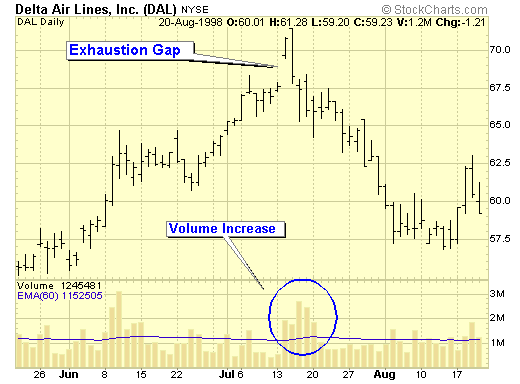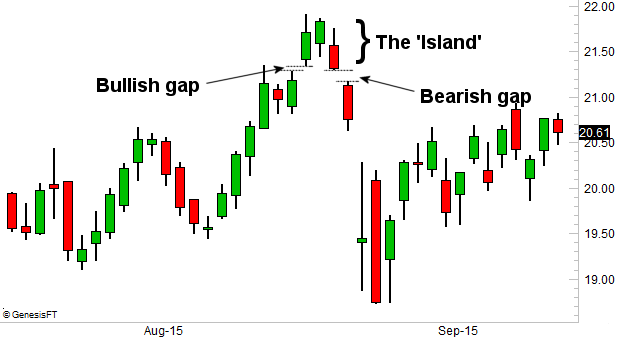Market side: Futures trading basics
LESSON 28: TECHNICAL ANALYSIS

This monthly educational series will feature the basic workings of the futures and options markets and how they can be utilized to help farmers with risk management.
GAP TYPES (EXHAUSTION AND ISLAND REVERSAL)
Our third type of gap is known as an exhaustion gap. This gap in trading usually appears much later in the trend and can be found near the bottom of a downtrend or at the top of an uptrend. The significance of this gap is that it usually marks the beginning of a trend change whether it is reversing to the upside or the end of a bull run. The gap usually appears after a news item or report which adds to the already negative or, in the case of a bullish market, euphoric conditions that already exist.
Seeing a gap in trading would incite the average trader to throw in the towel, so to speak, with regard to fighting the direction of the persistent strength or weakness that has been the norm.
This gap also coincides with the old adage — buy the rumour sell the news.
Once the price gaps higher or lower, we see a look for a complete reversal in prices in the near term and possibly within mere hours of the initial gapped move. The key to watching the formation is to see if the gap gets filled in the immediate bars on the chart. This is the signal that the move is exhausted and once the euphoria has abated, the reversal is in play and the only concern at this point is how the market will close by the end of that session. Ideally, we would like to see a close in the opposite direction, that is to say, a gap higher would actually end up closing lower on the session and a gap lower would end up closing higher on the session. One other key ingredient in this gap is the volume on the given day or bar.
The chart below shows an exhaustion gap that appeared at the top of the move in Delta. Notice how the second bar completely reversed after the initial gap and how it ended the day much lower, closing the gap on much higher volume. The volume is very important as it confirms the amount of pressure confirming the bears have controlled the day. Exhaustion gaps are noted mostly for signaling reversals in trends.

ISLAND REVERSAL
The last type of gap we will look at is the island reversal. Like the exhaustion gap, the island reversal appears at the top or bottom of an extended trend. The main difference is that instead of closing the gap, the price actually gaps back to the starting point, leaving an island. This is a stronger signal, in my opinion, than the exhaustion gap as it leaves an island with many traders stranded in their positions. •

Marty Hibbs is a 25 year veteran futures trader, analyst, and portfolio manager. Hibbs was a regular guest analyst on BNN for four years. He is currently a grain merchandiser with Grain Farmers of Ontario.
|
Lesson Definitions: Volume: Volume is simply the number of shares or contracts that trade over a given period — usually a day. Often times, volume is expressed as a bar chart directly below the price chart with the bars height illustrating how many shares have traded per period. Volume is indicative of the strength of the bar that it is assigned to. A high volume confirms the bullishness of that particular bar or candle while a low volume day is suspect. |
DISCLAIMER: This information has been compiled from sources believed to be reliable, but no representation or warranty, express or implied, is made by the author, by Grain Farmers of Ontario, or by any other person as to its accuracy, completeness or correctness and Grain Farmers of Ontario accepts no liability whatsoever for any loss arising from any use of same.


























